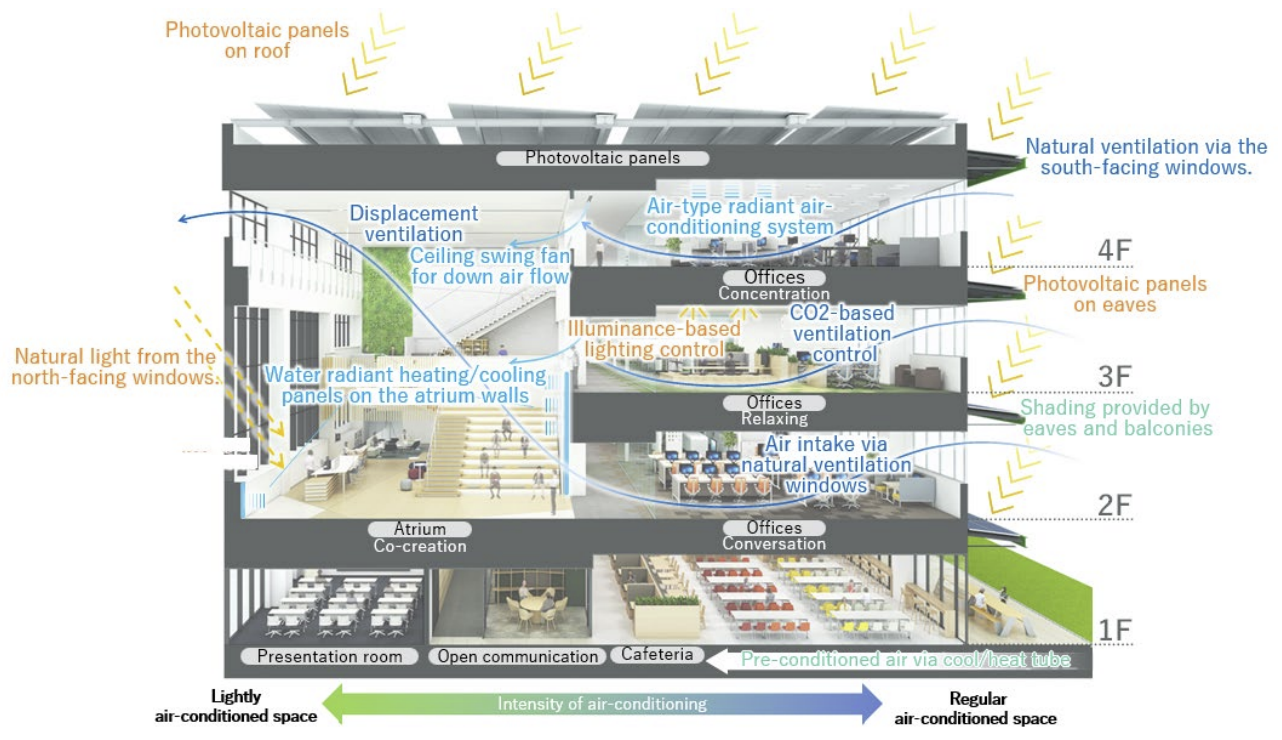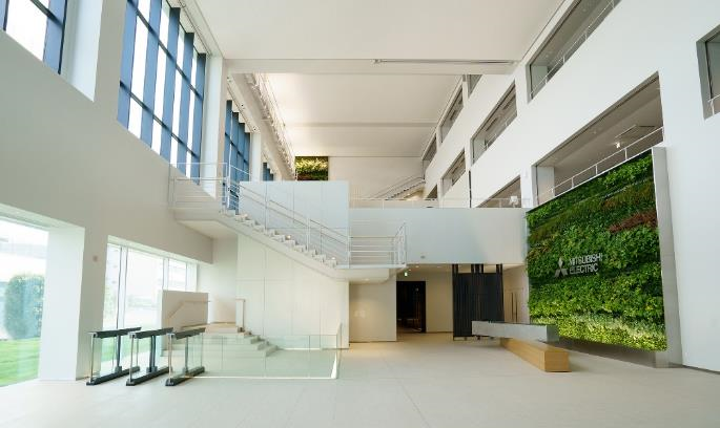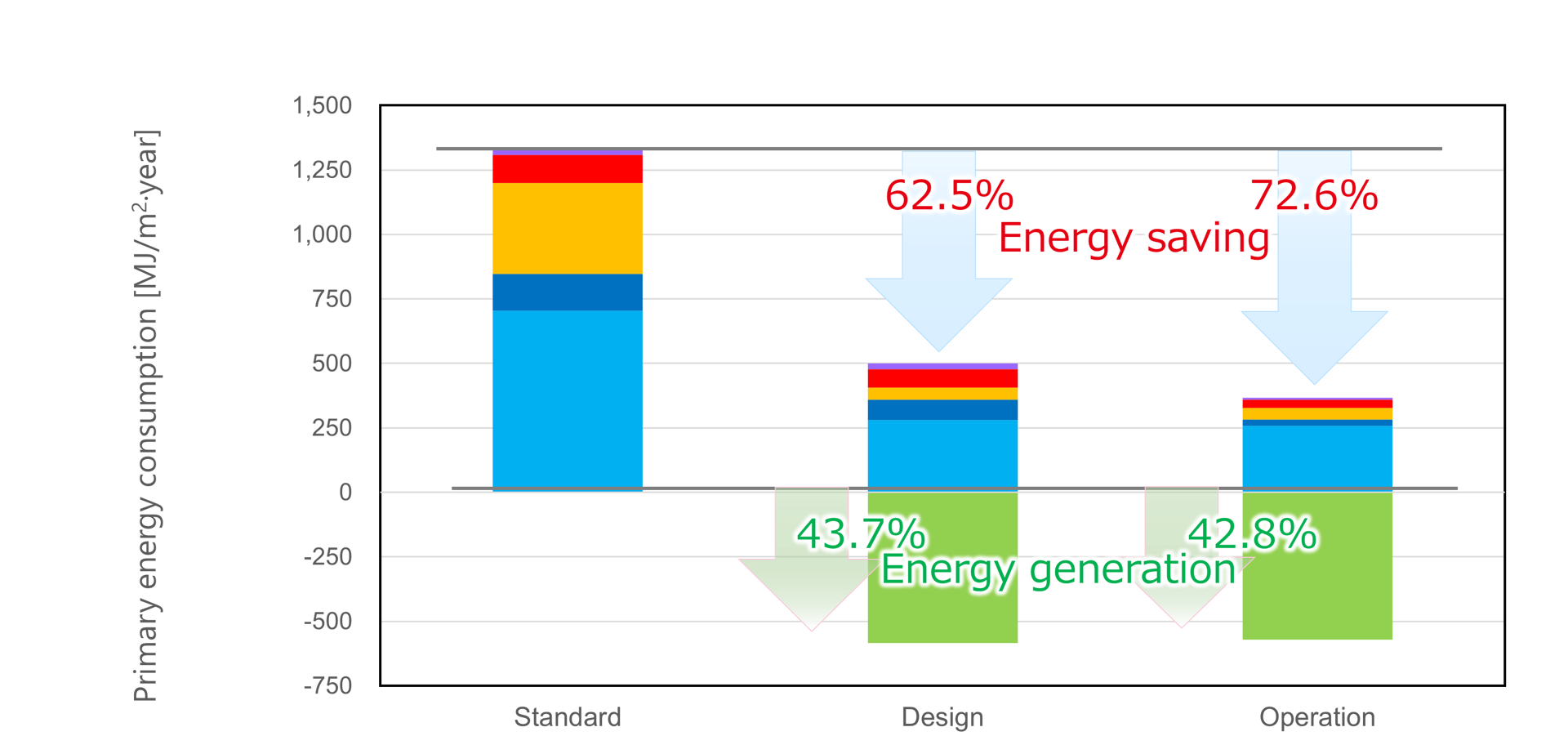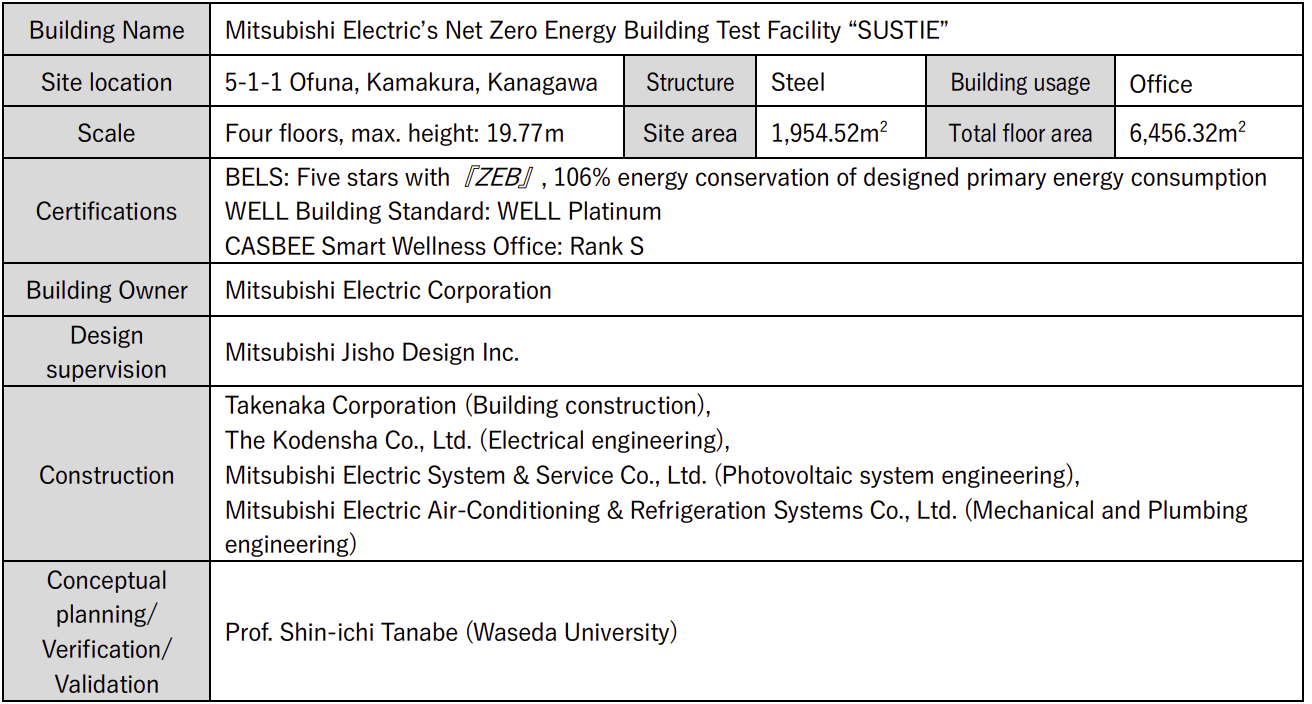Mitsubishi Electricʼs Net Zero Energy Building Test Facility “SUSTIE” is Asian Regional Winner in ASHRAE Technology Awards Program

Mitsubishi Electricʼs Net Zero Energy Building Test Facility “SUSTIE”
Mitsubishi Electric Corporation, Mitsubishi Jisho Design Inc. and Waseda University jointly announced today that Mitsubishi Electricʼs Net Zero Energy Building Test Facility “SUSTIE,” located in Kamakura, Kanagawa prefecture, was selected as Regional Winner (Regional Level Technology Awards 2025-2026 Regional Winner) in the Commercial Buildings (new) category of the ASHRAE🄬🄬 Technology Awards program. Organized by the Asian Region (ASHRAE Region XIII) of The American Society of Heating, Refrigerating and Air-Conditioning Engineers (ASHRAE), the program is one of the worldʼs biggest technology award initiatives focusing on environmentally friendly building design.
- ASHRAE Technology Awards, one of the worldʼs biggest technology awards program for environmentally friendly buildings
The ASHRAE Technology Awards program, held annually since 1999, is one of the worldʼs biggest such programs, recognizing innovative environmentally-friendly buildings for their occupant comfort, indoor air quality and energy conservation, with evaluations based on the buildingʼs verifiable operating data. In the Asian region selection, SUSTIE was the Regional Winner in the New Commercial Buildings category at the ASHRAE Region XIII Chapters Regional Conference. This award will ensure SUSTIE is reviewed by ASHRAE as a representative project of the Asian region in the worldwide selection process. Mitsubishi Electric, Mitsubishi Jisho Design and Waseda University will continue in their efforts to realize “the Worldʼs Most Environmentally Friendly Building.”
ASHRAE: American Society of Heating, Refrigerating and Air-Conditioning Engineers (based in Atlanta, US) was established in 1894, and is the largest international body focusing on air conditioning. It has more than 50,000 members across more than 130 nations.
- Japan’s first medium-scale office building to achieve three certifications in the highest grade of environment, occupants’ comfort and health
SUSTIE is Japan’s first medium-scale (over 6,000m2 ) office building to achieve the highest grade in three separate certification categories. The『ZEB』certification(1) awarded by the countryʼs Building-Housing Energyefficiency Labeling System (BELS) was achieved as a result of thorough energy conservation and the wholelife carbon reduction processes incorporated in SUSTIE. The building also achieved Rank S in the CASBEESmart Wellness Office program,(2) and Platinum certification under the WELL Building Standard🄬🄬(3) in recognition of its comfortable and healthy indoor environment. Since the completion of SUSTIE, Mitsubishi Electric, Mitsubishi Jisho Design and Waseda University have pursued continuous improvement in the energy efficiency of the building, leveraging AI, IoT and simulation technologies during its operation.

(1) Buildings that achieve a reduction in energy consumption of 100% or more compared with the reference building.
(2) A certification program that evaluates the building’s design and performance and efforts to maintain and improve occupants’ comfort and health run by IBECs (Institute for Built Environment and Carbon Neutral for SDGs).
(3) A certification program developed by Delos of the U.S. that evaluates the environmental performance of buildings. It focuses on the ergonomic aspects (e.g., productivity improvements) as well as occupants’ wellness (comfort and health). It is recognized as the standard index internationally.
- Four aspects of SUSTIE that are a model for the "prototype building" of the future
Improving the popularity of Net Zero Energy Buildings is urgently required in order to realize a carbon-neutral society. At the same time, creating comfortable workplaces that improve office workersʼ health and productivity is becoming an important factor of office design, as companies adapt to the decline in the working age population. SUSTIE achieves leading levels of energy conservation and occupantsʼ wellness,thereby addressing both of these social issues.
- A『ZEB』building designed to adapt to urban environments
As a part of the overall default design, smart architectural features such as openings and eaves have been utilized to maximize the use of natural energy. As an active design component, highly energy-efficient equipment has been deployed, resulting in significant energy conservation. Finally, photovoltaic panels with a generating capacity of approx. 360 kW have been installed on the roof of the building and protruding eaves to maximize on-site energy generation, thereby verifying the feasibility of medium-scale『ZEB』 buildings even in dense urban areas demanding highly efficient use of space.
 2. "Passive design" reducing energy consumption by means of proactive energy harvesting
2. "Passive design" reducing energy consumption by means of proactive energy harvesting
Large north-facing windows let natural light into the atrium space, creating brightness during the daytime without the need for artificial lighting. The amount of heat load in the entire building is reduced through the use of displacement ventilation, with warm air circulated through the atrium and the adoption of openable windows allowing natural ventilation.

SUSTIEʼs symbolic large atrium space, which incorporates Low-e double-glazed windows and horizontal eaves to reduce heating and cooling requirement while maintaining brightness inside through the use of natural light.
3. "Active design" facility that meets both Zero Energy Building and wellness requirements
Ceiling chamber pneumatic radiant air-conditioning systems were installed in three office rooms to heat and cool the air using ceiling-type air-conditioners, which adjust indoor temperatures and avoid uncomfortable draughts by using the radiation effect of the aluminum ceiling panels delivering thermal energy to the rooms. Various types of facility design have been deployed across the whole building to achieve thorough energy conservation while maintaining occupantsʼ comfort.
4. Novel AI-powered building operation technology establishes optimal balance between energy conservation and comfort
A "digital twin environment" of the building was built based on the Building Information Modeling (BIM) approach during its design phase; this simulated the operating schedule as well as indoor temperatures, humidity and brightness levels to predict the likely energy requirements and the impact of schedule changes on occupantsʼ comfort levels. Furthermore, by combining AI-powered multi-objective optimization plans with data sourced from the buildingʼs digital twin and from the planning and implementation of optimal operating schedules, it was possible to make progress towards realizing the concept of “Buildings that evolve daily.” In addition, adoption of the "Indoor positioning system"(4) being jointly demonstrated by Mitsubishi Electric and Mitsubishi Jisho Design supports varying working styles known as Activity Based Working and helps create a good balance between energy conservation and occupantsʼ comfort levels.
(4): The system collects occupantsʼ indoor location information by means of communication between the air-conditioning system and occupantʼs devices, and visualizes their location and individual room thermal information on a floor map
SUSTIEʼs annual primary energy balance in the first and second year. [MJ/m2 ・year]

(Metric: MJ/m²・năm)
SUSTIE was certified as『ZEB』in its design value. Moreover, the amount of its annual energy generation exceeded those of its energy consumption and thus, it achieved 『 ZEB 』 energy performance in both of its first and second year’s operation (A, B) as well.
With these initiatives, SUSTIE has also achieved『ZEB』energy performance levels in terms of its actual annual energy consumption. In addition, Mitsubishi Jisho Design is working to achieve embodied carbon(5) reduction through a reduction in equipment capacity and air-conditioning refrigerant levels, as well as an easy-to-navigate equipment layout that facilitates maintenance work, aiming to achieve a reduction of the buildingʼs overall CO2 emissions.
(5) Overall carbon levels emitted during the buildingʼs entire lifecycle (through production, construction, use and end of life) excluding energy and water consumption during its occupancy.
The award ceremony held at Suwon Convention Center in Suwon-si, Republic of Korea, on August 16th, 2025

- Building overview

"ASHRAE" is a registered trademark of American Society of Heating, Refrigerating and Air-Conditioning Engineers.
"WELL Building Standard" is a registered trademark of International Well Building Institute PBC.






